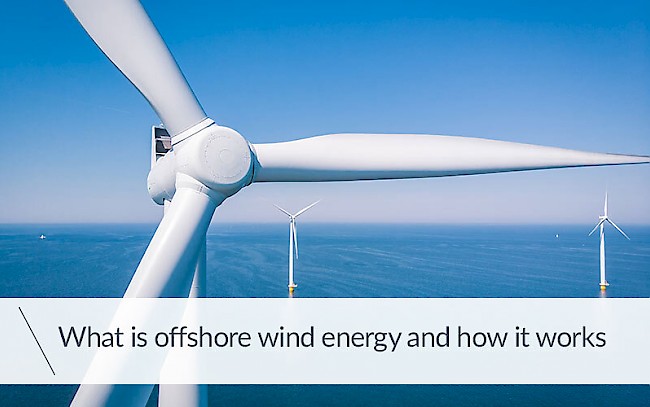
The build-up we are seeing in terms of output of renewable energy produced is not only a global trend, as it is increasingly urgent for most Countries - for environmental reasons and in order to achieve a reduction in greenhouse gas emissions, but also to reduce dependence on producers, rich in deposits of fossil fuels.
One of the major renewable clean energy sources that is experiencing a widespread adoption is wind, which sees the installation of an increasing number of wind turbines across many Countries, in particular in mountainous areas or along coastlands, where wind is both frequent and stronger, but also in offshore locations, away from the shoreline.
Installations of offshore wind turbines is part of an overall independence project which is one of the most strategic goals of Europe, which with five sea basins possesses huge potential both for offshore and ocean wind energy.
What are offshore wind installations?
Wind energy is based on the flow of air for the production of either mechanical energy or electricity - via a turbine which converts the movement into energy - making wind a renewable (freely available from nature) and eco-friendly resource.
A wind turbine farm is made of multiple single wind blades or wind turbines, which are generally grouped together spread across a defined area. There are two types of wind farms:
- Onshore, located on land, along the coast or on hills and mountains.
- Offshore, built in bodies of water.
The second type is considered to be both more stable and more efficient compared to onshore wind farms which are built inland, and indeed they bypass some of the landscape issues which sometimes prevent inland farms from ever being built.
Offshore wind farms produce clean and renewable energy by using wind forces produced by high seas, which achieve higher and more constant speeds in the absence of barriers. Indeed, it is estimated that offshore wind resources are approximately double those onshore.
As previously mentioned, the installation of wind turbines at sea bypasses landscape legislation which those installed on land come up against, thus permitting the creation of more and larger farms and so increasing the capacity to generate electricity.
How do offshore wind turbines work?
In order to avoid interrupting shipping traffic, currently offshore wind farms are located in relatively shallow waters, up to 60m depth, and far from the coast and from maritime shipping lanes, from strategic naval bases and protected areas.
But just how does an offshore wind farm work? Let’s start by taking a look at how the turbine is constructed.
- The tower, a vertical construction which at the very top houses the nacelle and the blades.
- The blades.
- The nacelle which houses the various components to which the blades are attached.
- A gear box.
- A converter.
- A transformer.
Regarding how it all works, we can summarise as follows.
Wind forces turn the blades, which are attached to the nacelle via a hub, and activate a shaft at a low velocity, which turns at the same velocity as the blades.
Via a gear box, the velocity is increased up by up to 100 times, causing the main shaft to rotate at more than 1500 times per minute and transmitting this speed to the generator.
The generator transforms kinetic energy to electric energy which is channelled downwards within the tower until it reaches the converter, which transforms the direct current into alternating current.
The transformer increases the voltage in order to transport all the electricity created across the entire wind farm.
The electricity is transported via submarine cables to an electrical substation, where it is converted to high voltage current and carried via the national grid from where it can reach its users.
The growth in offshore farms in Europe
Over the last ten years the amount of power generated by offshore wind farms has increased noticeably.
The ability of offshore wind farms in the EU was 14.6 GW in 2021 and is forecasted to increase at least 25-fold by 2030, taking advantage of the huge potential offered by the five seas basins of the continent.
The decidedly ambitious strategy of the European Union has set goals for the installation of at least 60 GW of offshore wind-sourced energy and 1 GW of ocean-sourced energy by 2030, and furthermore 300GW and 40 GW respectively by 2050.
The UK had the highest volume increase in offshore wind farms in Europe in 2021. Thereafter comes Denmark, home to the very first offshore wind turbine farm, in 1991, which has added another 650 megawatts of offshore wind turbine capacity each year.
Currently the EU is the global leader in key component production for wind turbines, as well as in producing foundation components and cables. Almost half of all companies active in the wind energy sector (onshore and offshore) are located in Europe.



